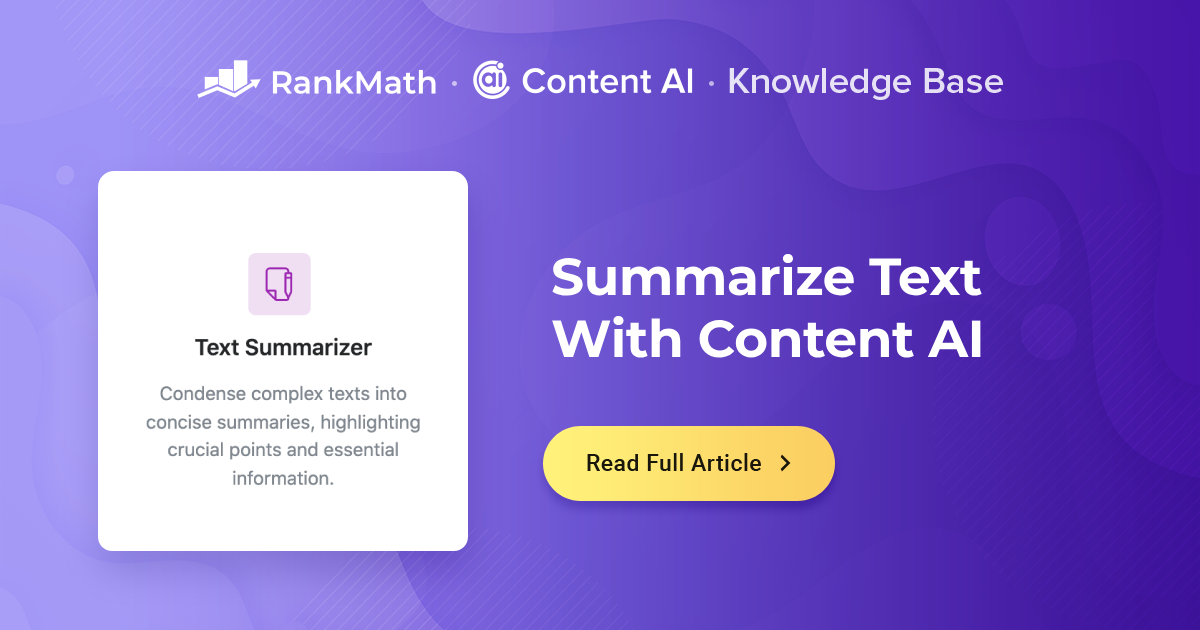In a world flooded with information, the ability to quickly and efficiently summarize vast amounts of text is becoming increasingly valuable. Enter AI summary generators, the game-changing technology that is transforming how we digest and disseminate information. In this blog post, we will explore what AI summary generator are, how they work, their applications, and the impact they are having on various industries.
What is an AI Summary Generator?
An AI summary generator is a software tool that utilizes artificial intelligence (AI) and natural language processing (NLP) techniques to automatically condense lengthy pieces of text into concise, coherent, and informative summaries. These summaries are designed to capture the key points, main ideas, and essential details of the original content while removing redundancy and irrelevant information. Essentially, they do the heavy lifting of summarization, saving users valuable time and effort.
How Do AI Summary Generators Work?
AI summary generators employ a multi-step process to create summaries:
- Text Preprocessing: The input text is cleaned and preprocessed to remove noise, such as formatting tags, punctuation, and stopwords.
- Sentence Tokenization: The text is divided into individual sentences to facilitate analysis.
- Content Analysis: Advanced NLP algorithms analyze the content of each sentence to identify important keywords, phrases, and themes. They consider factors like word frequency, semantic relationships, and context.
- Scoring and Selection: Sentences are scored based on their importance and relevance to the overall content. Highly scored sentences are selected to be part of the summary.
- Summary Generation: The selected sentences are stitched together to create a coherent summary that captures the essence of the original text.
- Quality Assessment: Some AI summary generators incorporate a final step to assess the quality and readability of the summary, ensuring it is coherent and well-structured.
Applications of AI Summary Generators
The versatility of AI summary generators has made them invaluable across a wide range of applications:
- Content Curation: Content creators and marketers use AI summary generators to quickly curate relevant news articles, blog posts, and research papers for their audience. This streamlines the process of finding and sharing valuable information.
- Academic Research: Researchers can use AI summary generators to digest extensive literature, saving time and allowing them to focus on the most relevant sources for their work.
- Business Intelligence: Businesses use AI summary generators to analyze reports, market trends, and customer feedback, helping them make data-driven decisions more efficiently.
- Legal and Compliance: In the legal field, AI summary generators assist in summarizing lengthy contracts, court cases, and documents, making legal processes more efficient.
- Education: Educators can create study materials and summaries of complex topics, aiding students in understanding and retaining information.
- Language Translation: AI summary generators can summarize content in one language and then translate it into another, bridging language barriers.
Impact and Benefits
The adoption of AI summary generators offers several benefits:
- Time Savings: Users can quickly obtain concise summaries, reducing the time required to sift through extensive documents.
- Improved Decision-Making: Summaries provide key insights and information, enabling better-informed decision-making.
- Enhanced Accessibility: Complex information becomes more accessible to a wider audience, promoting knowledge sharing and democratization.
- Consistency: AI-generated summaries are consistent in quality and format, eliminating human variability.
- Scalability: AI summary generators can process vast volumes of data, making them suitable for handling big data and large-scale content.
Conclusion



